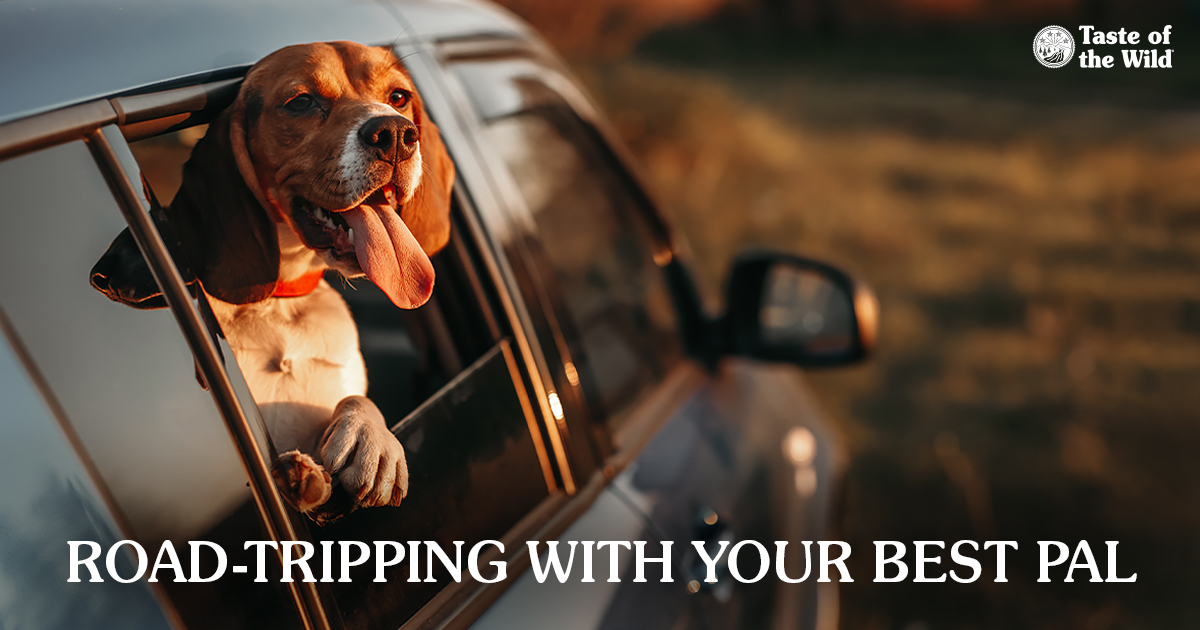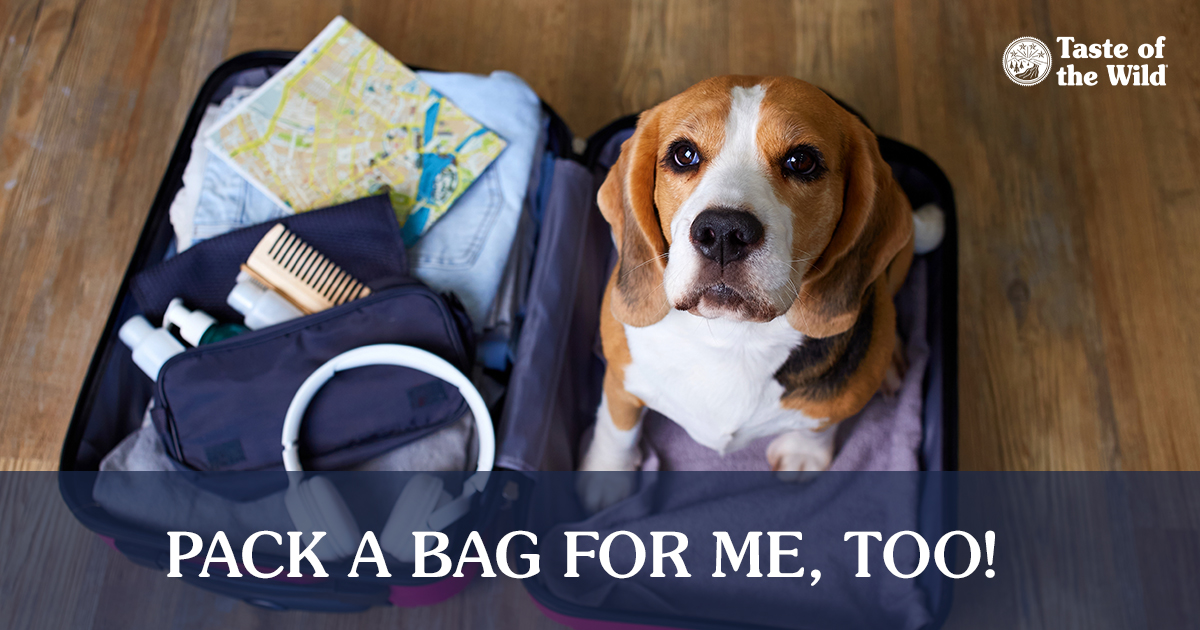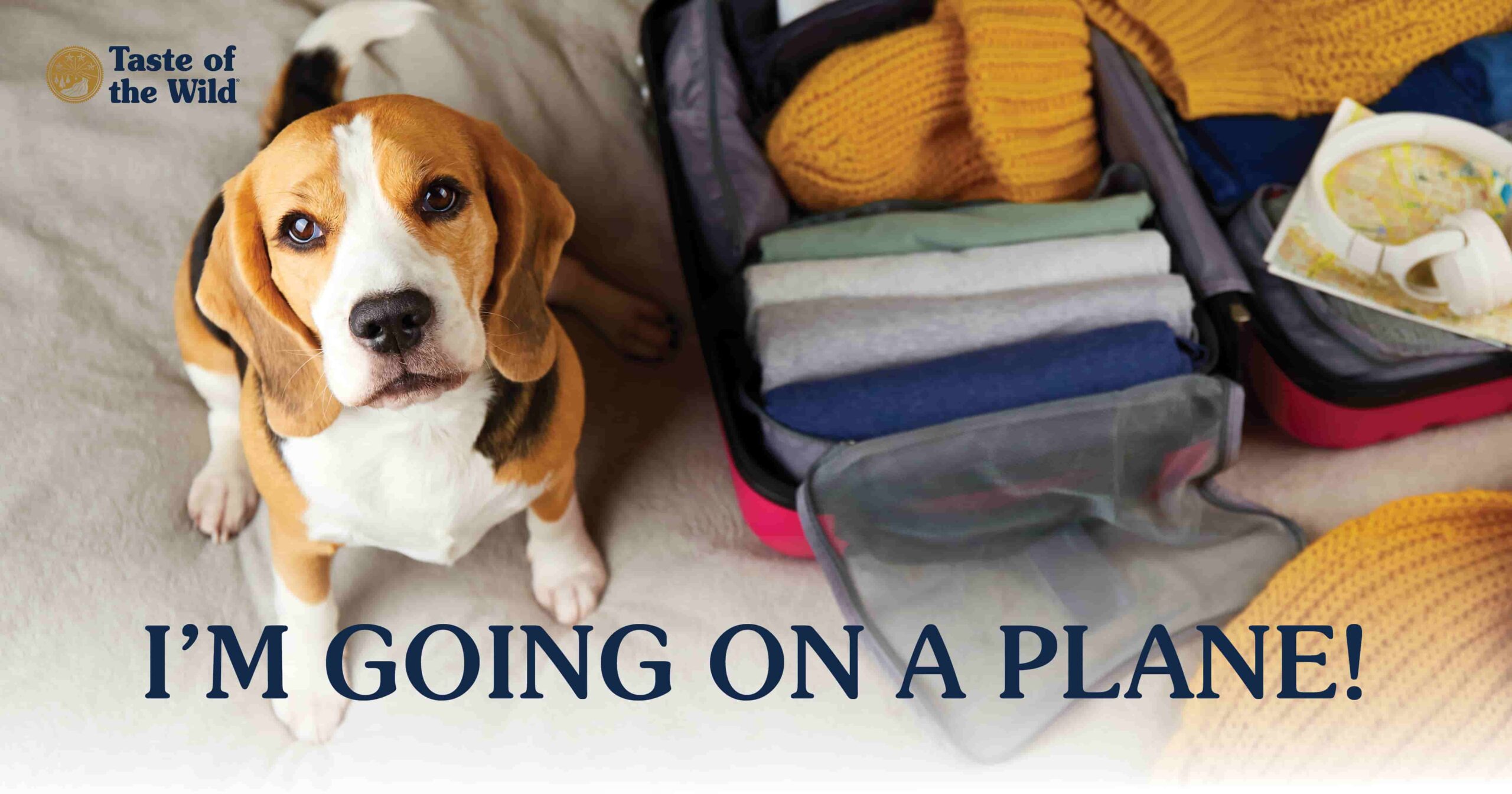Adventures in the Wild: Road-Tripping with Your Pets
Thursday, October 21, 2021 | Lifestyle

The best things about a road trip with your dog? He or she won’t complain about your off-key singing (although they may howl with you). They won’t roll their eyes if you finish the bag of cheesy popcorn by yourself. And they’ll never ask, “Are we there yet?”
If you’re planning to put your car odometer to work, here are some tips for safe and happy travels with your dog.
Prepare for the trip
- Check in with your veterinarian. Make sure your pooch is current on vaccines and parasite preventives. Ask the doctor if there are any health risks you should be aware of at your destination and request a copy of your pet’s vaccination record in case you need documentation when crossing state lines.
- Dogs who are low-energy couch potatoes should be checked to make sure they’re physically able to hike or participate in any other activities you have planned. If your dog is queasy on car rides, talk to your veterinarian about medications to help prevent nausea. Dogs who need sedatives for car travel are probably more comfortable left at home with a sitter or at a boarding facility.
- Get your dog accustomed to car rides. If your pup hasn’t spent a lot of time in the car, start by taking short rides to fun places, like the dog park (see the “safety first” section, below). Then gradually extend the time in the car.
- Pack all pet essentials. That includes food and water bowls, food, bottled water, poop bags, leashes, medications, grooming tools, a pet first aid kit, pet bed and toys.
- Book rooms at pet-friendly hotels. Make sure your dog will be welcome at each stop by exploring websites like BringFido to find pet-friendly hotels.
- Brush up on obedience. Commands like “come,” “drop it,” and “stay” may be crucial when your dog is in unfamiliar territory.
- Check your dog’s ID. Because dogs can escape at rest stops or be scared by loud noises and run off, make sure ID tags include your current phone number. Call your microchip company to ensure your contact information is up to date. If you plan to stay at one location for any amount of time, make a temporary tag with that address.
Safety first
- Make sure your dog is properly restrained in the car. Never let your dog ride “shotgun” or in someone’s lap in the front seat. This can lead to driver distraction, and in the event of an accident, your pet may be seriously injured by an airbag.
- In an accident, an unrestrained dog can become a projectile, potentially harming other passengers and themselves. It’s best to keep your pet in the back seat in a harness that’s fastened to a seat belt, or in a kennel in the back of the car. The kennel should be roomy enough for the dog to stand, turn around and lie down inside. It should also be secured in place, so it doesn’t slide around.
- For information about pet kennels and harnesses that have been safety tested and certified, visit the Center for Pet Safety, a nonprofit consumer advocacy group that works to protect pets during travel.
Hit the road
- Prevent motion sickness. If possible, feed your dog about four hours before you leave. Try not to give your pup food or water during the drive, when the car is moving.
- Keep your dog inside the car. Don’t let your dog hang its head out the car window; this can result in eye injuries, and dogs have been known to jump out of the car and into traffic. Dogs should also never ride in the bed of a pickup truck, even if leashed in (and of course, not in a carrier on the top of the car).
- Use the child safety button to lock windows. This will prevent your pet from accidentally pushing any control buttons in the back seat that could create a dangerous situation with the windows. If it’s hot, aim an air conditioning vent at your dog.
- Make a pit stop every 3 to 4 hours. Your dog will need to stretch his or her legs, go potty and have a drink of water. Let’s face it; you will too. If possible, put the leash on your dog before opening the car door.
- Never leave your dog alone in the car. If you’re traveling to warm destinations, your dog can suffer from heatstroke in a matter of minutes. And pets can be stolen!
With a little preparation, there’s no limit to the road trips you can take with your best pal.
RELATED POST: Road Trip! RV Life with Pets
The information in this blog has been developed with our veterinarian and is designed to help educate pet parents. If you have questions or concerns about your pet’s health or nutrition, please talk with your veterinarian.




